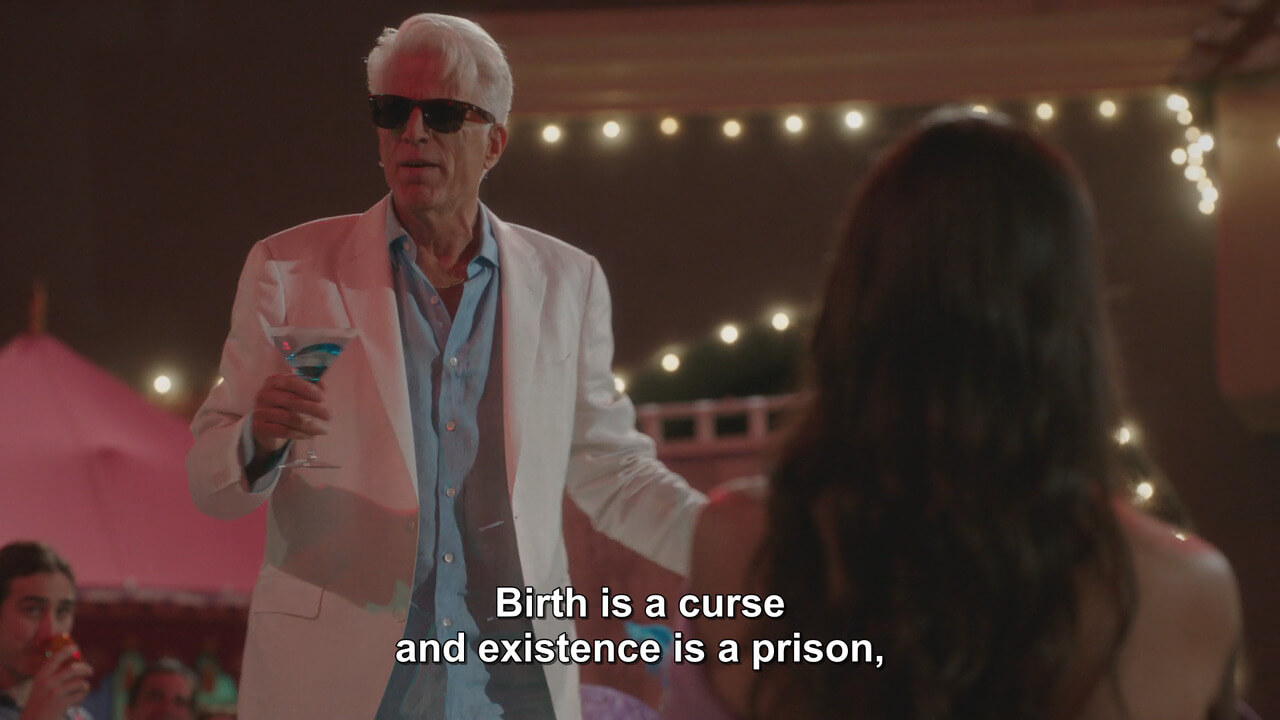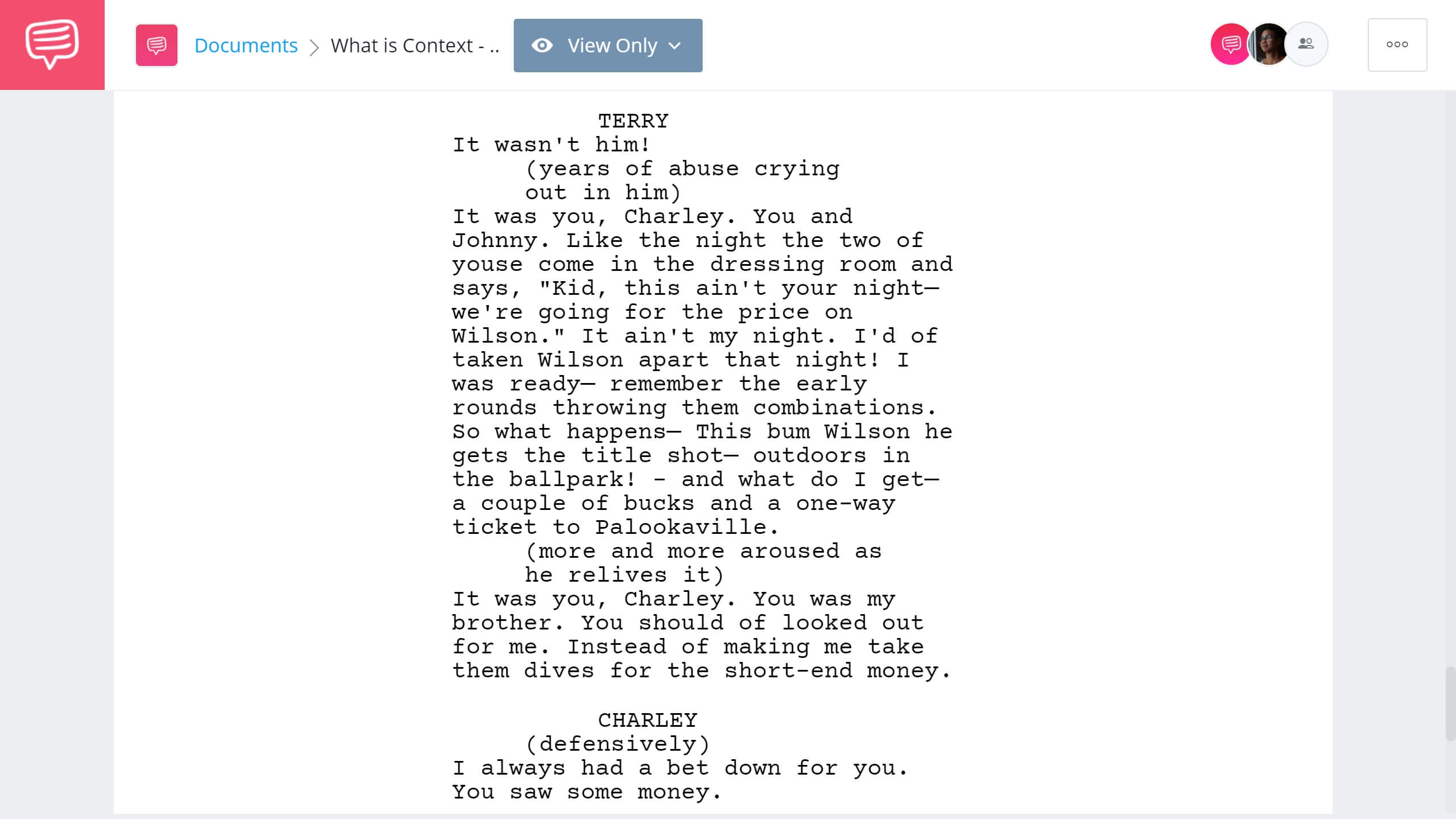Context has the ability to change the meaning of a story and how we view its characters — but what is context? We’re going to answer that question by looking at examples from The Office, In Cold Blood and more. We’ll also look at some tips and tricks for how you can effectively implement this necessary element in your own stories. By the end, you’ll know why context is so important and how to apply it in a variety of different ways. But before we jump into our examples, let’s define context.
Content vs Context Definition
What does context mean?
Whether we realize it or not, context is all around us. It is the fundamental way we come to understand people, situations and ideas. Everything that we think, say, see, hear, and do is a response to the external stimuli of the world.
And how we regard that stimuli is largely in response to the context it’s presented to us in. For more on this idea, check out the video from the University of Auckland below.
What is Context? By University of Auckland
So you’re probably thinking, “Okay that’s fine and good and all, but what is context? Surely the meaning can’t be so vague.” Well, it is and it isn’t.
But by understanding the essential aspects of the term, we’re better prepared to apply it in meaningful ways. So without further ado, let’s dive into a formal context definition.
CONTEXT DEFINITION
What is context?
Context is the facets of a situation, fictional or non-fictional, that inspire feelings, thoughts and beliefs of groups and individuals. It is the background information that allows people to make informed decisions. Most of the time, the view of a person on a subject will be made in response to the presented context. In storytelling, it is everything that surrounds the characters and plot to give both a particular perspective. No story takes place without contextual information and elements.
Characteristics of Context:
- Information that’s presented to us
- Used in an argumentative sense
- Biased/subjective form of education
ContextUal Information
Context clues: in and out of context
In terms of storytelling, there are only two kinds of context: narrative and non-narrative. The former gives us information on the story and the latter gives us information on everything outside of the story.
Narrative types of context include:
- Character
- Plot
- Setting
Narrative context is everything that explains “what’s going on” in a story. Take a comedy series like The Office for example: there are a lot of moments in the show that wouldn’t make sense without contextual information — and there just so happens to be a video that explores The Office “out of context.”
What Does Context Mean in The Office?
Even the most ardent fans of The Office may find themselves asking, “what in the world is going on?” when presented with these clips out of context. On social media channels, moments from film and television are often presented like this — like this screen grab from The Good Place.

Context Definition and Examples
In a sense, out of context moments have become a type of humor in and of themselves. But it’s important that we also consider how information outside of the narrative may influence our feelings on the story.
Non-narrative types of context include:
- Historical
- Authorial
- Critical
Non-narrative context is everything outside the story that influences our thoughts and opinions on the subject matter. Take Truman Capote’s In Cold Blood for example: when we learn of the circumstances outside of the subject matter, it’s impossible for us to feel the same way about the story.
In Cold Blood is an investigative novel about the murder of a family of four in Holcomb, Kansas. Capote started writing about the murders in earnest before expanding his research into a full-fledged novel — the end result speaks for itself — not only is Capote’s prose considered some of the greatest of all-time, but it also pioneered true-crime writing.
But when In Cold Blood is viewed through the context of the man who wrote it, the setting it took place in, and the precedence of its writing, the meaning is liable to change. The two convicted murderers in the novel, Perry Smith and Dick Hickock, were interviewed by Capote through the writing process.
Their testimony is admitted in the novel, but filtered by Capote. So, for us to say their testimonies are veracious would be irresponsible, considering the context through which it was written.
Elsewhere, critics argue that we can only judge a piece of art based on the merit of the art itself, not the context it was created in. French literary theorist Roland Barthes said that “text” can only speak for itself and that the thoughts and feelings of the author should have no impact on its merit. For more on this “The Death of the Author” theory, watch the video below.
Exploring Context Clues • Lindsay Ellis on ‘The Death of the Author’
In recent years, many fans have criticized J.K. Rowling’s Harry Potter books in light of her political views. Some critics argue that her views change the meaning of the novels. Others argue that her views should have no impact. Alas, there’s no “right” answer, but it’s important to consider how context, both inside and outside of a story, can influence readers.
Context Clues Set the Stage
How to use context as exposition
There’s a word in screenwriting that most screenwriters shutter to hear… and that word is exposition. Ah yes, the dreaded exposition — or explanatory description — has been known to sink more than a few good scripts. So, how do screenwriters use exposition effectively? Well, it starts with a need for context. When I say need, I mean the story would have no impact without it.
We imported the On the Waterfront screenplay into StudioBinder’s screenwriting software to look at an iconic scene where context is the primary force behind exposition.
In this scene, Terry details how Charley and Johnny abandoned him. This backstory, or exposition, adds the necessary context needed to make Terry’s exclamation, “I coulda’ been a contender!” impactful.
Click the link below to read the scene.
What is Context? • Read the On the Waterfront Screenplay
This explanatory description establishes a context in which we’re able to see that Terry has endured “years of abuse.” The context is further executed as Terry laments the actions of his best friends. Think of it this way: proper exposition should act like a tea-kettle; each relevant detail making the kettle hotter and hotter — or more contextual and more contextual — until — the tension is released… and whoosh, the conflict is resolved.
How to Add Context Clues
Tips for incorporating context
Context plays a huge role in guiding the attention and emotional attachment of the audience. Say a character does something really bad, like kill another character. Our natural inclination is to vilify them, but if their actions are given context, we might view their actions as heroic.
Take Ridley Scott’s Gladiator for example: when Maximus kills Commodus, we view him as the hero. Let’s take a look at how this scene plays out:
Context Examples in Gladiator
In context, Maximus’ actions are justified. Commodus killed Maximus’ family and rigged the fight against him. As such, it makes sense that we root for his death. Here are some tips for how to incorporate context in your own works:
- Create empathy for your protagonist
- Vilify your antagonist
- Maximize conflict
- Develop themes
- Callback to prior events
By utilizing these strategies, you’ll create narrative continuity. Context relies on the impact of the past, so you should be mindful of the character’s pasts at all times when writing.
UP NEXT
What is a Plot?
Context may be what informs our understanding of a story’s events, but it would mean nothing if there weren’t events to be informed of. Plot refers to the events and actions that take place within a story — and it’s an essential aspect of every narrative. In this next article, we look at how plot is used in Die Hard to connect narrative threads from beginning to end!

